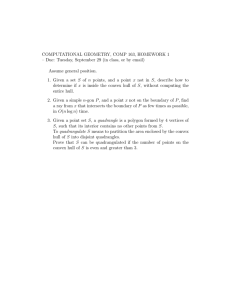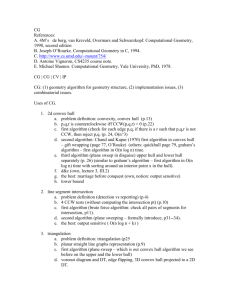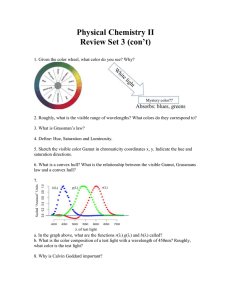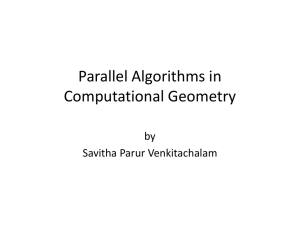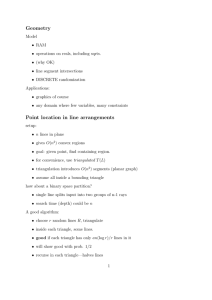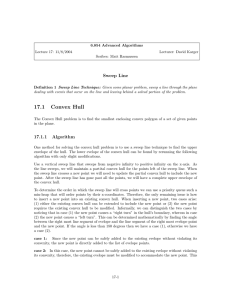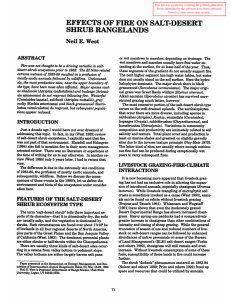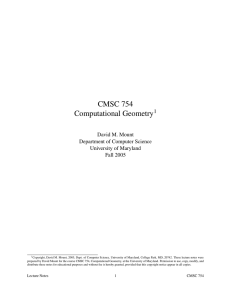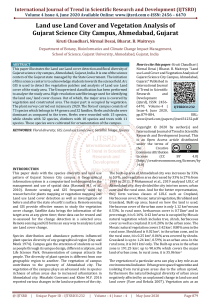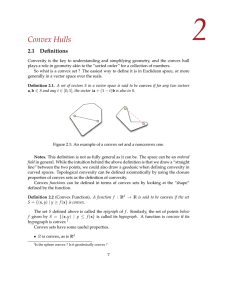MODELING OF A SINGLE SHRUB FROM TLS DATA
advertisement
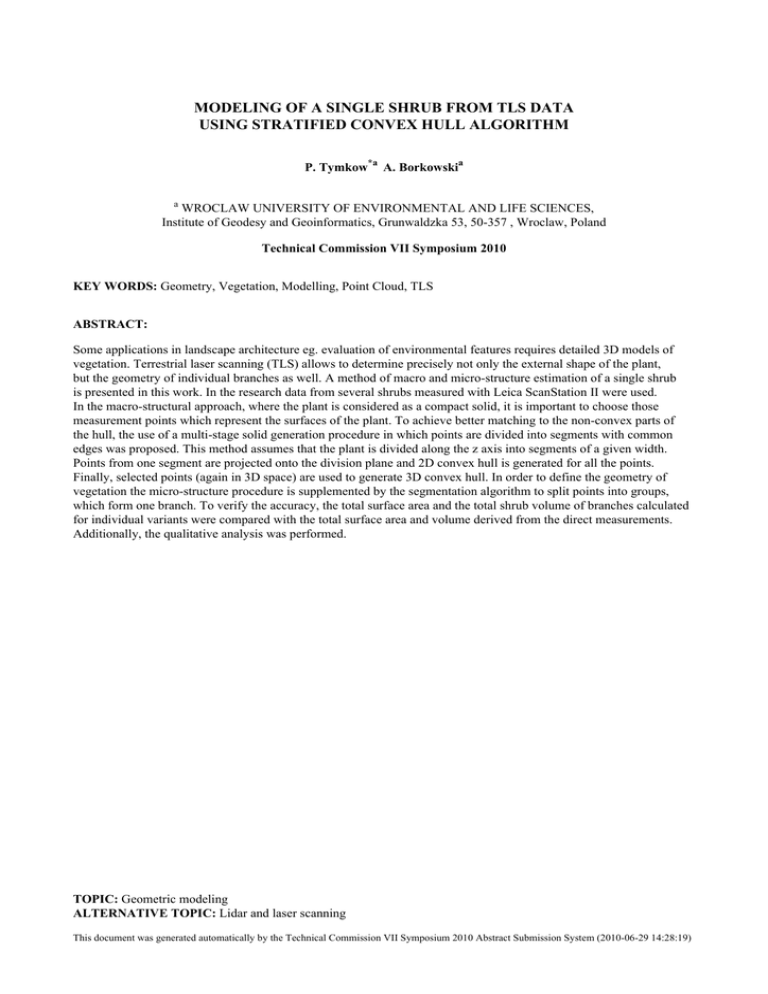
MODELING OF A SINGLE SHRUB FROM TLS DATA USING STRATIFIED CONVEX HULL ALGORITHM P. Tymkow*a A. Borkowskia a WROCLAW UNIVERSITY OF ENVIRONMENTAL AND LIFE SCIENCES, Institute of Geodesy and Geoinformatics, Grunwaldzka 53, 50-357 , Wroclaw, Poland Technical Commission VII Symposium 2010 KEY WORDS: Geometry, Vegetation, Modelling, Point Cloud, TLS ABSTRACT: Some applications in landscape architecture eg. evaluation of environmental features requires detailed 3D models of vegetation. Terrestrial laser scanning (TLS) allows to determine precisely not only the external shape of the plant, but the geometry of individual branches as well. A method of macro and micro-structure estimation of a single shrub is presented in this work. In the research data from several shrubs measured with Leica ScanStation II were used. In the macro-structural approach, where the plant is considered as a compact solid, it is important to choose those measurement points which represent the surfaces of the plant. To achieve better matching to the non-convex parts of the hull, the use of a multi-stage solid generation procedure in which points are divided into segments with common edges was proposed. This method assumes that the plant is divided along the z axis into segments of a given width. Points from one segment are projected onto the division plane and 2D convex hull is generated for all the points. Finally, selected points (again in 3D space) are used to generate 3D convex hull. In order to define the geometry of vegetation the micro-structure procedure is supplemented by the segmentation algorithm to split points into groups, which form one branch. To verify the accuracy, the total surface area and the total shrub volume of branches calculated for individual variants were compared with the total surface area and volume derived from the direct measurements. Additionally, the qualitative analysis was performed. TOPIC: Geometric modeling ALTERNATIVE TOPIC: Lidar and laser scanning This document was generated automatically by the Technical Commission VII Symposium 2010 Abstract Submission System (2010-06-29 14:28:19)
